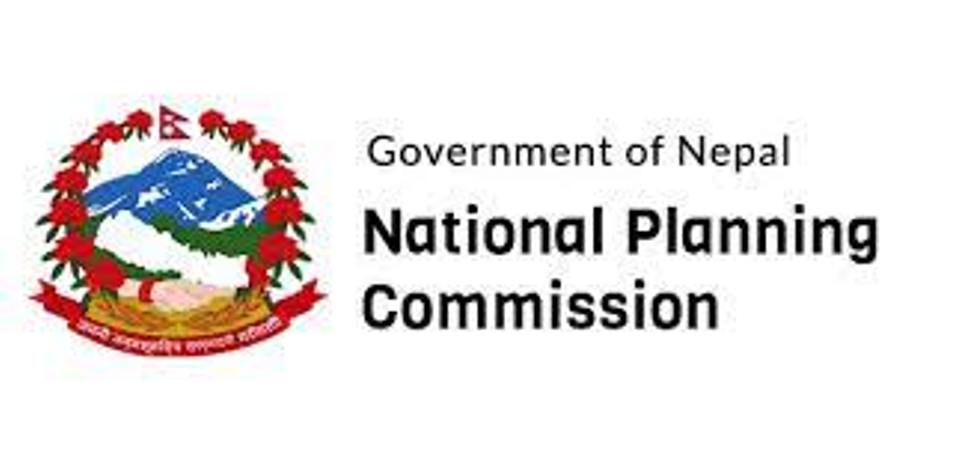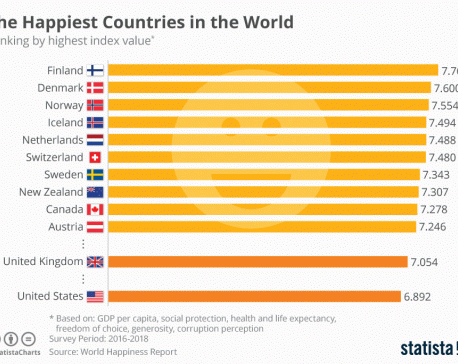
OR
Govt aims to increase the size of GDP to Rs 8.5 trillion in five years
Published On: February 7, 2024 10:30 AM NPT By: Dilip Paudel

KATHMANDU, Feb 7: The government aims to increase the size of the country's gross domestic product (GDP) by around Rs 2.9 trillion in the next five years. As the 15th Plan is nearing completion, the National Planning Commission (NPC), which has prepared the draft of the 16th Plan, has set a target of raising the country's GDP to around Rs 8.5 trillion by the fiscal year 2028/29.
The NPC has drafted the 16th Five-Year Plan with a target of massive growth in the size of the economy in the next five years. In the fiscal year 2022/23, the size of the country's GDP was Rs 5.39 trillion. Looking at the average, it seems that the target is to increase the GDP by Rs 2.9 trillion in five years.
The government aims to increase the country's economic growth, reduce consumer inflation, reduce public debt, and trade deficit, and increase exports. In the year 2022/23, the country’s economic growth stood at 1.68 percent. By the end of the 16th five-year plan, the NPC has set a target to achieve 7 to 8.5 percent growth.
The government has decided to adopt a new strategy for growth.
According to the NPC, it is essential to produce competitive goods and services by utilizing a strategic mix of capital, labor, and technology. This approach should focus on sectors where the country has a comparative advantage, in line with the policy of economic liberalization adopted by the nation. The goal is to enhance production and productivity through the effective use of both domestic and foreign capital and technology.
The draft outlines the need to increase economic growth by emphasizing more on labor-intensive economic activities. It is also expected to solve the growing unemployment problem in the country and will help capitalize on the benefits of the youth workforce available in the country.
The government has concluded that the expansion of the manufacturing industry is the best option to increase the productivity of the country and create employment opportunities for the youth within the country.
Since the service sector, which contributes about 60 percent to the country's economy, is based on remittances from foreign employment, the government is set to increase the GDP by setting appropriate policies for sustainable structural transformation of the economy and expanding investment in the productive sector.
The government has acknowledged that the agricultural and industrial sectors face challenges including rising production costs and tough competition. There are hardly any agriculture-based industries in the country and there is a lack of private sector investment. Additionally, the product market lacks guarantees, fertile land is left fallow, and there is a growing culture of consuming imported goods over locally produced ones.
There has been a contraction in the industrial sector, alongside issues of poor governance in cooperatives. Financial resources are concentrated among a limited number of individuals and entrepreneurs, and there is poor management of public finances. The government has devised strategies to address these issues.
Similarly, political instability and informal economic transactions have also added to the challenge. Thus, to increase the size of the economy and improve the economic indicators, the government has planned to strengthen the major sectors of the economy. The NPC has put forward some strategies to transform the economy.
Some major intervention programs of the government are also mentioned in the draft of the 16th five-year plan prepared by the NPC.
The NPC has launched a major program to increase investment, conduct structural infrastructure development programs, conduct innovation and entrepreneurship development campaigns, and strengthen supply management in competitive markets.
Likewise, the NPC plans to strengthen the revenue system and enhance the governance of the projects.
Other initiatives include import substitution and export promotion, incentives to channel remittance flows through legal avenues, investments in infrastructure development and promotion of industries, promotion of tourism, and the improvement of the cooperative sector, among others.
The government formulated the first five-year plan in 2013. The five-year plan was launched with the objective of economic growth and social development.
You May Like This

Infographics : The Happiest Countries in the World
Finland came out on top of the United Nation’s World Happiness Report. The top 3 countries are all Nordic countries,... Read More...

APF, NPC, NDA, Ifad into semis
BANKE, Feb 18:The semifinals lineup of the ongoing fifth Prime Minister Cup International Women’s Volleyball Tournament has been completed on... Read More...

Submit evaluation report within six months: Development committee to NPC
KATHMANDU, March 16: The meeting of the development committee of the Legislature-Parliament has ordered the National Planning Commission (NPC) to submit... Read More...









Just In
- Forced Covid-19 cremations: is it too late for redemption?
- NRB to provide collateral-free loans to foreign employment seekers
- NEB to publish Grade 12 results next week
- Body handover begins; Relatives remain dissatisfied with insurance, compensation amount
- NC defers its plan to join Koshi govt
- NRB to review microfinance loan interest rate
- 134 dead in floods and landslides since onset of monsoon this year
- Mahakali Irrigation Project sees only 22 percent physical progress in 18 years









Leave A Comment